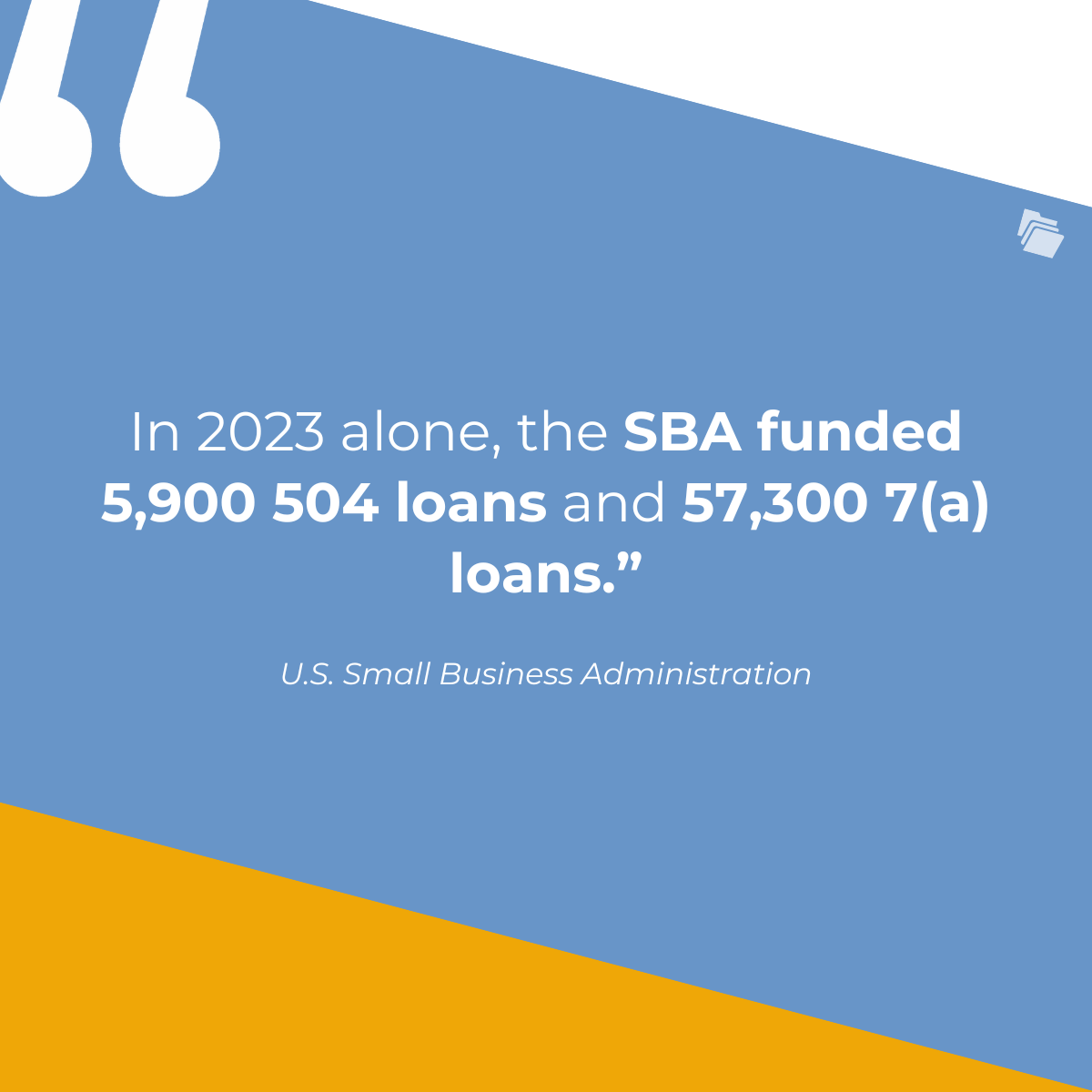Businesses may obtain a business loan to secure funding for purchases like equipment, real estate, and land, or to contribute toward disbursements like payroll and working capital. About 70% of commercial real estate loans are held by small regional lenders.
The application process can vary widely depending on the organization, type of loan, and requirements of the lender. For example, the Small Business Administration offers SBA 504 loans to promote job creation, so the amount of funding available to businesses corresponds to jobs — $65,000 for each job created or retained by the use of funds.
Applying for a commercial loan doesn’t have to be a challenge — with the right preparation and the right tools, your application process can be as streamlined and painless as possible.

Step 1: Determining Why You Need a Loan
Does your business need a new piece of equipment as you prepare to expand? Do you need funds to help cover payroll during a difficult time? Do you need funds to inject as working capital?
Businesses use loans for many different purposes and the unique factors surrounding each decision impact the entire loan application process — from the types of lenders available to you to the ways your funds can be used to the timeline of your loan closing.
In 2023, the SBA funded just over $50 billion in business loans and investments, and that’s just one of the options available to businesses.
Before you take any tangible steps toward applying for a commercial loan, evaluate your needs and determine why, specifically, you need a loan.
Step 2: Choosing the Right Type of Loan
As previously mentioned, the purpose of your loan has profound implications on the entire loan application process. Once you’ve established the purpose of your loan, you can start to evaluate what types of loans and lenders are the right fit for what you’re trying to accomplish.
Here are some of the major types of loans to be aware of as you make this determination:
1. Term Loans
This category includes loans that involve a lump sum draw and a fixed repayment period, usually with a fixed interest rate as well. In other words, term loans exclude rotating lines of credit and adjustable-rate loans. Term loans are advantageous for some businesses because they offer immediate access to funds and allow businesses to plan their repayment schedule months or years in advance.
2. Business Line of Credit
Unlike a term loan which offers one-time funding, a business lines of credit (also called a BLOC or B-LOC) give businesses access to rotating funds. This means instead of receiving a one-time draw that they make consistent payments on, businesses who obtain business lines of credit have access to draw additional funds, even as they repay their initial draw, up to their credit limit. This is good for businesses that need flexible, intermittent access to funds.
3. SBA Loans
While most loans happen solely between a lender and a borrower, SBA loans involve a third party: the Small Business Administration, frequently via a certified development company (CDC). SBA loans like 504 and 7(a) loans are worth considering because they typically carry more favorable terms for the borrower – since the SBA may guarantee or contribute a portion of the funds, banks face less risk and so can offer these loans to borrowers at better terms. However, businesses may be limited by how funds can be used as different loan programs within the SBA may have specific usage requirements. In 2023 alone, the SBA funded 5,900 504 loans and 57,300 7(a) loans.

4. Invoice Financing
In invoice financing, businesses obtain funds by using their outstanding invoices as collateral. Invoice financing operates similar to a term loan (though lenders may offer fixed or adjustable repayment) but has the added bonus of offering quick access to loans with less paperwork and a faster turnaround than a typical term loan. Invoice financing gives businesses the ability to access funds tied up in outstanding invoices, making them a popular option.
5. Equipment Financing
Equipment financing is unique from other types of lending because funds are tied to a physical asset – the equipment being financed. Repayment terms for equipment financing typically mirror the useful life of the equipment.
6. Commercial Real Estate Loans
Similar to equipment financing, commercial real estate loans are tailored to a specific purchase: commercial real estate. However, commercial real estate loans typically have a longer repayment period, and interest rates typically fluctuate.
Step 3: Evaluating the Commercial Loan Requirements
First, you evaluated your loan needs. Then, you explored the different types of loans available. Next, it’s time to evaluate the requirements for your chosen loan program.
While the loan requirements differ for each type of loan, lenders must scrutinize the borrower’s creditworthiness, which can include reviewing financial documentation, analyzing borrowing history, and evaluating collateral.
Some loan programs have specific requirements that may exclude your organization. For example, SBA 504 loans require borrowers to have a net worth of less than $15 million, so if your organization exceeds this limit, you might have to return to step 2 to consider a different loan program. Around 33.2 million businesses in the U.S. are small businesses.
Step 4: Preparing Your Application
Once you’ve narrowed down your options and reviewed the requirements for your desired loan, it’s now time to prepare the application.
While each loan program carries its unique requirements, there are a few commonalities businesses should prepare for.
- Business Plan. While each lender and loan program may have its specific underwriting guidelines, lenders typically require foundational documentation like a business plan.
- Financial Statements. Generally, lenders require financial statements like income statements, balance sheets, and statements of cash flows.
- Collateral. While equipment and real estate loans are typically based on the value of the underlying asset, other types of loans may still require collateral of their own. For example, invoice financing utilizes outstanding invoices as collateral.
- Tax Returns. Depending on the type of loan program, lenders may require multiple years of both business and personal tax returns.
Ultimately, each commercial loan’s requirements depend on the specifics of the loan program and the individual requirements set by each lender. However, one thing all loan programs have in common is that they require documentation.
Collecting and transmitting documentation takes time, and this step of the commercial loan application process can delay the closing of your loan. A process for efficiently and securely collecting documentation can greatly enhance your process and speed up your loan funding. Document collection software from FileInvite can make your paperwork problems disappear.
Step 5: Finally, Closing on Your Loan
Once the lender has received your completed loan application and associated paperwork, they will scrutinize your documentation. This process can take anywhere from a few days to several weeks, depending on the specifics of your loan program, lender, and your organization.
Leading up to the closing of your loan, you may be able to negotiate specific loan terms with the lender, such as interest rates and repayment periods.
During the underwriting process, the lender may require additional documentation. Be prepared to gather and submit additional paperwork during this stage of the application process, and keep in mind that any delay in gathering paperwork may also translate to a delay in closing your loan.
Making Applications A Breeze: How FileInvite Can Help
In the process of issuing a commercial real estate loan, lenders must request information from borrowers, process paperwork, complete complex underwriting procedures, process more paperwork, and finally close the loan.
During this process, gathering and submitting paperwork is the consistent pain point for both borrowers and lenders. Waiting for documentation introduces delays in the process, dragging out the underwriting process. Tools that speed up and secure document collection can be a major asset for lenders.
FileInvite’s document collection solution makes gathering and sharing paperwork simple and streamlined. To experience more secure document collection, request a demo today.

Related Posts: